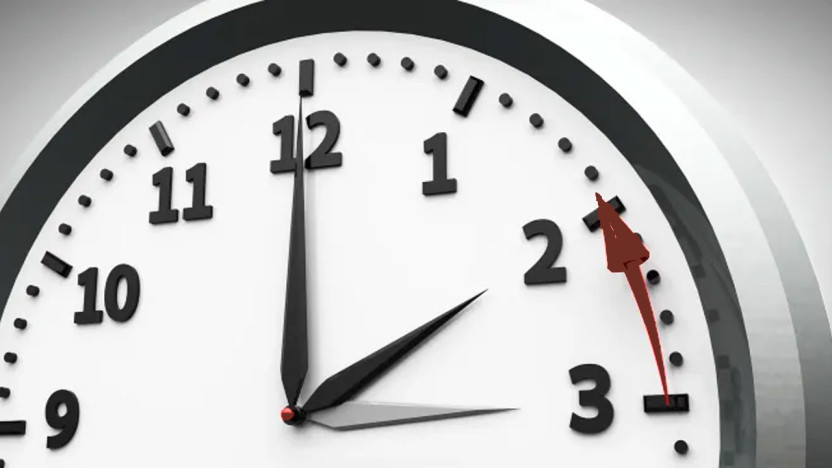
Twice a year, we find ourselves adjusting our clocks: setting them forward in the spring and then reversing them in the fall. Not just the act of changing the time, Daylight Savings Time carries with it a complex history and arguments about its actual benefits and potential downsides. As we approach the next DST change, let's delve into the journey through the benefits, drawbacks, origins of temporal change, and specific DST dates in the U.S. in the next 05 years.
Daylight Savings Time (DST), aka daylight time, daylight time, or summer time in different regions of the world, is simply the practice of setting the clocks forward (typically by 1 hour) from standard time during the spring or warmer months of the year and then reversing in the autumn. That means darkness falls later during warmer months due to the extra daylight period in the evening.
By extending evening daylight, DST enables us to make better use of daylight hours, which can save energy and boost economic activity as a result. That’s why daylight savings started. However, not all regions and counties worldwide implement DST. For instance, it isn’t observed near the Equator, where the sun rises and sets at similar times all year round.
The start and end dates of daylight savings time vary from region to region and country to country, but it typically starts in March or April and ends in October or November. DST starts in the U.S. on the second Sunday of March annually and ends on the first Sunday of November.
Daylight Saving Time Dates in The U.S | ||
Year | DST Begins | DST Ends |
2024 | Sunday, March 10, 2024, at 2:00 A.M. | Sunday, Nov 3, 2024, at 2:00 A.M. |
2025 | Sunday, March 9, 2025, at 2:00 A.M. | Sunday, Nov 2, 2025, at 2:00 A.M. |
2026 | Sunday, March 8, 2026, at 2:00 A.M. | Sunday, Nov 1, 2026, at 2:00 A.M. |
2027 | Sunday, March 14, 2027, at 2:00 A.M. | Sunday, Nov 7, 2027, at 2:00 A.M. |
2028 | Sunday, March 12, 2028, at 2:00 A.M. | Sunday, Nov 5, 2028, at 2:00 A.M. |
Daylight Saving Time, as mentioned recently, has been implemented to make better use of daylight in the warmer months when the days are longer. The prime idea behind DST is to shift more daylight hours into the evening when people are more likely to be active. Of course, it’s not a mere coincidence that DST has been popular in many regions around the globe.

This practice, in fact, offers various benefits, such as:
Daylight Saving Time is a common practice observed in many countries and regions globally; however, there has been an ongoing debate about its real benefits and drawbacks. People have different opinions about whether or not DST is a good idea.
They have been debating its pros and cons for many years. Proponents of DST hold the strong viewpoint that it helps conserve energy, promotes outdoor activities, and boosts economic activities, as mentioned above.
On the other hand, opponents also have convincing reasons and arguments against DST, such as the following:
Overall, the evidence and analysis on the benefits and drawbacks of DST are mixed, and the debate over this practice is likely to continue. Up until now, it seems that DST’s benefits generally outweigh the potential downsides since Daylight Savings Time has been observed in many different areas around the planet. For sure, only time will tell whether it will continue to be a part of our lives or eventually be abolished.
Wonder who started Daylight Savings Time and why was Daylight Savings Time started? If so, we should take a quick look at the origin and pretty long history of DST.
Benjamin Franklin was the very first to suggest the idea of Daylight Saving Time in the 18th century as a way to reduce the use of candles. However, the actual implementation of DST initially began in the early 20th century, with Germany adopting it in 1916 to conserve energy during World War I. The idea quickly gained traction, spreading to many countries, including the United States, which adopted DST in 1918.
After the war, DST adoption was repealed but revived during World War II and the 1973 oil crisis. Today, about 70 countries in most of North America, Europe, and parts of Asia implement DST. But, it’s worth noting that many countries do not use DST, mostly in Asia, Africa, and Latin America.
DST has pros and cons, and there is no clear consensus on whether it is beneficial or harmful or if it should be modified or abolished. Today, DST varies in different parts of the world, depending on their location, climate, and preferences. You may not know this: Not all the countries and regions change the clocks 1 hour forward during DST; for example, in Australia’s Lord Howe Island, clocks are shifted only a half hour forward.
Daylight Savings Time has been a common practice implemented widely around the world, though many countries do not observe it. DST has a long and complex history, and it also has various advantages and disadvantages. Ongoing debates around the benefits and drawbacks of this practice are continuing, and no one knows if DST will be modified or eventually abolished. No one knows if DST will be modified or eventually abolished, but the role of time calculation in this discussion is undeniably crucial.